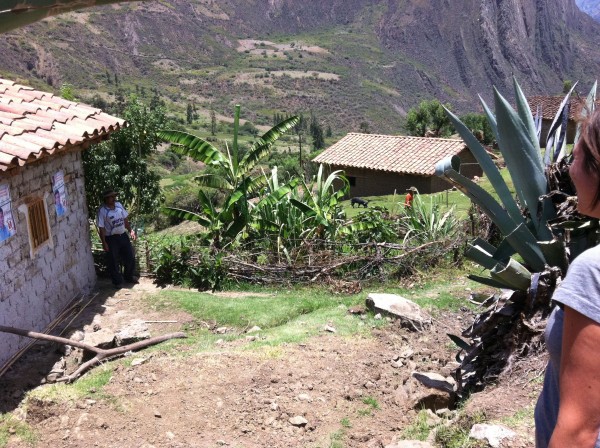In your town the medical station has a technical assist named David. He introduced you around Llama’s neighboring communities. How else has he helped you with your project?
I credit him with for helping me get established here. Because even though he is a little bit nutty in everyone’s mind, he still knows absolutely everyone. He organized all of my initial meetings. He is the one who, when Peace Corps was considering putting a volunteer here, got ever important person in the community to come to the meeting. He really pushed having a volunteer here.
He showed me around. He introduced me to people. He gave me creditability within the community by explaining to everyone what I did. And he really understood what I was trying to accomplish, to a large extent.
With the health promoters, since the network had become inactive, he helped get that restarted. He made all of the initial invitations to come to a meeting with me. And I know that people would not have responded if I, just a random person to them, had made those invitations.
One of the nutty things he did was that in translating your presentations on health care, he would sometimes add his own advice?
Yeah, he likes to talk a lot.
Sometimes he goes on and on and off on tangents, and that makes it very difficult to run educational sessions with him. But over the past few months, I have been doing sessions on my own, which has worked out much better. He was difficult to work with at times.
Does he have a continuing role in the project? Do you have a continuing relationship with him?
We do monthly educational sessions together for the health promoters that they can then replicate in their communities.
In terms of the healthy homes project, he is the president of the committee. But that’s kind of just a title. There’s not much that he does with the project.
Initial interviews play a critical role in diagnosing needs and determining a meaningful and sustainable intervention. Looking back, what worked? And what might you do differently?
I think that for me the initial interview process was more for me to get to know everyone in the community—to get to know the community itself and the different parts of it. It gave me a particular focus during the initial months I lived in Llama. I think that a fair amount of information I collected from the interviews I could have already figured out.
Also, I think some of the information people shared was inaccurate. All of these people were meeting me for the first time, so they were not sharing detailed information or accurate information. For example, they said that they brushed their teeth three times a day or after every meal, which I know isn’t true after living here for awhile.
But I think the initial interviews were really, really helpful for getting out and getting to know people. It helped me break into the community right away during those first few months, so I don’t know that I’d change anything.
When you spoke with mothers who spoke only Quechua, how did you ensure that your translators accurately conveyed both your questions and their answers?
I think that problem is just inevitable. There’s not going to be any way for me to ensure accuracy.
We did the majority of the interviews in Spanish. The ones we did in Quechua, there wasn’t anything I could do. No one is going to translate everything they say—especially when we are rushing around trying to complete five house visits during a morning.
There is neither time nor incentive to translate something word for word when you can summarize the statement in a few words.
As you have built up trust with moms, have they shared new information with you that they did not offer on your first visit?
Yeah, definitely. I think a lot of the moms consider me a good friend now. So not just health information or project information—I feel like they talk to me about most stuff.
Recently, they’ve talked to me about how they are learning all this new information about nutrition but they don’t have the resources to actually put that information into action. Before, they wouldn’t have shared that concern.
They are a lot more comfortable with showing me their kitchens and what they cook, which wouldn’t have happened before.
What do you mean they don’t have the resources to put information into action?
Well, like the families that don’t live close to Llama can’t come here regularly to but meat or to buy eggs. If they don’t have chickens that are laying eggs, they don’t have that source or protein. They usually don’t have cheese or yogurt available. A lot of the moms only grow a few carrots in their backyard, so there are no vegetables. And fruits only come in season a few months during the year.
So they don’t have the resources to make these meals that we are talking about.

